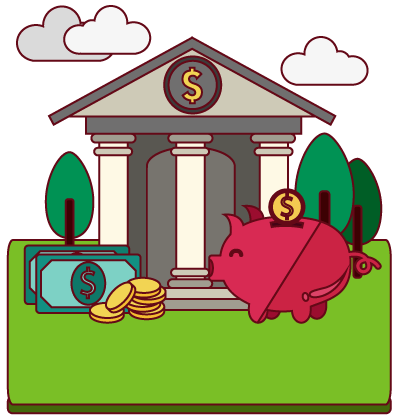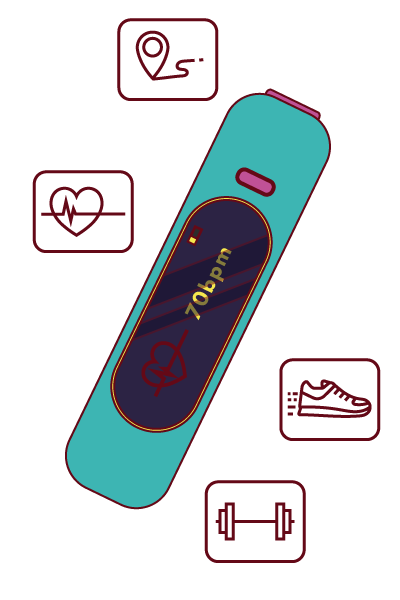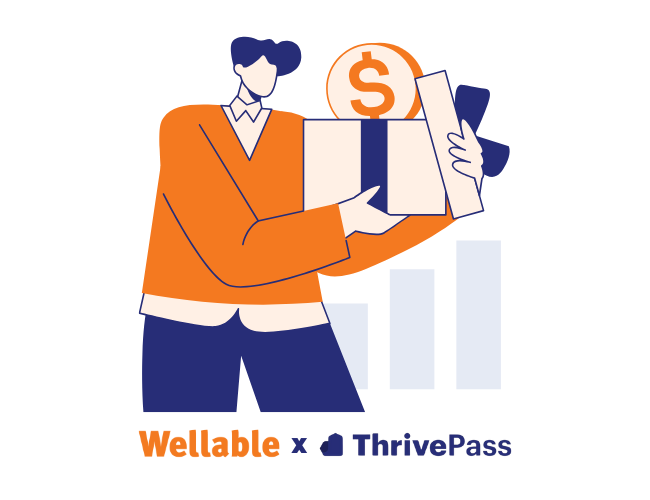Changing long-standing habits is difficult, especially when it comes to health and wellness. While some employees are naturally motivated to join wellness programs, many struggle to make lifestyle changes without a little push. By offering thoughtful wellness incentives, companies can help employees kickstart healthier choices and fully engage in wellness programs to support sustained well-being.
Benefits Of Offering Wellness Incentives For Employees
Offering wellness incentives drives employee engagement and creates an organizational culture that values health. Here are some key benefits of implementing a wellness incentive program:

- Boosts wellness program engagement: Companies that offer health incentives report a 22% higher average participation rate in wellness programs than those who don’t. By offering rewards for participation, companies foster ongoing engagement and ensure that more employees benefit from health initiatives.
- Builds a culture of health: Communicating and promoting wellness incentives raises awareness of the program and the importance of well-being. This integrates well-being into the company culture and promotes healthy habits beyond the workplace.
- Demonstrates commitment to employees: Wellness incentives show employees that their health and happiness matter to the organization. Offering meaningful rewards demonstrates a company’s investment in people’s well-being, which boosts loyalty and enhances employee relations.
Types Of Wellness Program Incentives

Wellness program incentives range from cost-effective options to more substantial rewards. Employers can choose wellness incentives that best fit their budget and employees’ interests:
- Monetary: Gift cards or cash rewards provide employees with the flexibility to choose how they spend their rewards.
- Benefits-based: Discounts on health insurance premiums, contributions to HSAs or FSAs, or additional paid time off promote wellness, work-life balance, and financial stability.
- Fitness-related: Gym memberships, wearable devices, or wellness goods (e.g., yoga mats or meal delivery subscriptions) encourage physical activity and support healthy living year-round.
- Experiential: Event tickets, catered lunches, or team-building activities offer employees memorable rewards for their participation.
- Budget-friendly: Public recognition, certificates, or small tokens of appreciation cost little but carry great emotional value.
25 Ideas For Wellness Incentive Rewards
Here are 25 ideas for wellness incentives that will keep employees motivated and engaged in well-being programs:
Monetary
1. Gift Cards

Use electronic gift cards to give employees the ultimate freedom to spend their hard-earned wellness rewards on items they truly value. Flexible redemption options, such as Wellable’s Rewards Wallet, take this a step further by allowing employees to redeem rewards on-demand from a wide selection of nearly 1,000 global brands. These highly motivating rewards let employees envision the prize of their dreams as they work to improve their health and well-being.
2. Snappy Gifts

With Snappy Gifts, employees can choose an item from a collection of curated physical goods, with the option for employers to customize the available options to only include wellness-related items. Prices are not shown, and employees will only see options within their budget, allowing them to choose a wellness incentive not based on price but on actual needs/interests. The gift redemption process is designed to be a fun, interactive experience that makes the selection process easy and exciting. Snappy is available to both domestic and international employers.
3. Charitable Contributions

A Harvard Business School study found that empowering employees to support causes of their choice is more satisfying than receiving a bonus. This reward allows employees to give back to causes they care about while working on living a healthier life. Employers can contribute directly to charities or use a Wellable partner, GlobalGiving, to allow employees to receive a gift card that can be used to fund more than 3,000 charities/projects across the world.
4. Payroll Contributions (Cash)

Wellable works with employers to provide cash contributions via payroll as rewards for wellness programs. This automated process makes the distribution of prizes simple and easy and includes applying appropriate tax adjustments to the prize amounts.
Benefits-based
5. Lifestyle Spending Accounts (LSA)

A Lifestyle Spending Account helps organizations manage employee benefits by providing a one-time or recurring stipend. Employees earn credit by engaging in a wellness program and redeeming funds in a virtual marketplace or by requesting reimbursement for eligible expenses.
6. 401(k) Contributions

Financial health and wellness continue to become an area of focus for employers. This reward allows organizations to integrate their wellness program, which likely focuses on more traditional forms of well-being, with their most significant instrument for employee financial health. By participating in their wellness program, employees increase their personal savings and financial security.
7. Paid Time Off (PTO)

Every employee needs time to detach from work to recharge and replenish. Some years, employees need extra time off to meet personal obligations. By offering PTO as a reward, employers allow employees to reinvest in their health and well-being through vacations, time with friends and family, and opportunities to manage their lives outside of work.
8. Flexible Spending Account (FSA)

FSA contributions earned through wellness program participation allows employees to bank funds that they can use to manage other aspects of their health and wellness needs, from clinical visits to personal care goods and services. It is a great way to link a reward budget to health benefits and ensure employees do not defer care because of costs.
9. Health Savings Account (HSA)

Health savings accounts effectively link a wellness incentive budget to health benefits and promote financial well-being. Employees can use the funds they earn to cover medical expenses that arise as part of the high-deductible health plan, and since the funds rollover, they can also serve as a tax-deferred retirement option.
10. Premium Differential

For employees who have a portion of their wages deducted to pay for their share of a health insurance premium, this wellness incentive allows them to lower that financial burden by participating in a wellness program. By completing certain healthy behaviors and hitting certain goals, employees can increase their take-home pay.
Fitness-related
11. Wearable Devices

Wearable devices, such as Fitbit and Garmin, make healthy living easy and fun. By offering wearable device coupons as program rewards, employees can select from a range of already discounted wearable devices and choose the one that is most aligned with their lifestyle and health goals. Devices are shipped directly to the purchaser for free, and employees can use their prize in their next challenge.
12. Wellness Goods

Wellness goods range from healthy kitchen items, such as juicers, blenders, and yogurt makers, to clinical equipment, such as blood pressure monitors. These prizes ensure the rewards budget supports healthy living. Employees can use the reward to purchase discounted wellness goods from Wellable’s partner, Invite Fitness.
13. Fitness Memberships

This wellness incentive provides an alternative to offering every employee a gym reimbursement subsidy or discounted/free access to a specific facility. By participating in a challenge and qualifying for a prize, an employee can receive a subsidy or free month(s) to a fitness center or program, such as ClassPass. For a continuous program, an employee can earn the reward by utilizing the fitness membership that is being subsidized.
14. Premium App Subscriptions

Nutrition apps such as MyFitnessPal and mindfulness/meditation apps such as Headspace operate on a freemium model. That is, certain features require users to pay for a premium account. This wellness incentive allows employees to enjoy the full benefits these apps have to offer by providing premium access as a prize. Like many of the reward options, this allows the reward budget to be invested back into employee health.
Experiential
15. Catered Lunch

Offering a healthy catered lunch as a prize brings numerous benefits to employers. Food is a strong motivator, and such an event fosters opportunities for colleagues to connect and build meaningful relationships, which can enhance the organization’s overall health and productivity. Additionally, a catered lunch in the office raises awareness of the wellness program, especially among those who did not participate.
16. Event Tickets

Many employers have access to tickets to sporting events, concerts, and other local experiences. These sought-after tickets are often already purchased and do not require an additional budget. Rather than giving out event tickets on a first-come, first-serve basis, have employees improve their health to qualify for them!
17. Chair Massage

Treat employees with a gift that keeps giving! Since chair massages are effective in reducing stress, pain, and muscle tension, this wellness incentive delivers health benefits in addition to motivating engagement in challenges. Similar to catered lunches, onsite chair massages also bring additional awareness to the program, especially for those who did not participate.
18. Meal Delivery Service

A great way to reward healthy behaviors is to encourage even healthier ones! Meal delivery services help employees eat healthy at home by providing them with pre-portioned ingredients and detailed cooking instructions each week. Provide employees with a few weeks of meal delivery services as a reward. Once they get hooked, they can renew their subscription on their own, continuing the health benefits of home cooking.
19. Team-Building Experiences

From scavenger hunts to bowling, employees love to participate in fun events, especially with colleagues they have meaningful relationships with. Team-building activities are a great way to promote social interactions and teamwork amongst employees. It also expands employees’ horizons by exposing them to activities they may not have otherwise tried.
Budget-friendly
20. Public Recognition

Saying “congrats” to wellness winners publicly doesn’t cost a thing, but hearing it can mean a great deal to an employee (especially if senior leadership is involved). This simple, no-cost reward can drive wellness program engagement without breaking the bank.
21. Certificate Of Participation

Certificates for participating in a wellness challenge offer employees a tangible item that reflects their accomplishment and can be proudly displayed in their workspace. A simple piece of paper can make a significant impact by acknowledging their efforts and providing something they can share with others.
22. Time With Leadership

It is often difficult for employees to find time to interact with company leadership outside of formal work settings. With personal and professional development being a high priority for top performers, this prize provides lots of motivation. It also fosters community by building connections throughout all levels of the company.
23. SuiteBreak

Vacations make people happy and improve health and performance. According to Scientific American, “downtime replenishes the brain’s stores of attention and motivation” and “encourages productivity and creativity.” SuiteBreak provides participants with Wellness Dollars to reduce the cost of hotels, resorts, cruise lines, car rentals, and activities. Employees enjoy prices lower than what can be found through every major travel site. Employers can give each participant $1,200 in Wellness Dollars for less than $25.00 per employee per year.
24. Corporate Discounts

Corporate discounts offer genuine savings, though limitations may prevent employers from extending these benefits to everyone. By providing exclusive discounts on popular goods and services, employers can affordably offer “monetary” rewards. Each time an employee uses a discount, they keep more money in their wallet!
25. Company Swag

Employers appreciate company swag because it allows a company’s best asset (their people) to promote the brand and business. It only makes sense to integrate a wellness program, which is designed to improve the health and productivity of an organization’s workforce, with goods that allow those people to promote the company. Also, company swag that is already purchased will not require additional budget. Finally, employers can make wellness program-specific swag to promote their commitment to employee health.
FAQs About Employee Wellness Incentives
Are wellness incentives taxable earnings?
In the US, monetary incentives like cash rewards or gift cards may be considered taxable earnings. However, some wellness-related benefits, like contributions to a health savings account (HSA) or flexible spending account (FSA), can be tax-free. Employers should check with tax advisors to ensure compliance.
How do you measure the return on investment (ROI) of wellness incentives?
It’s important to consider both ROI and value on investment (VOI) when measuring the impact of wellness incentives. ROI focuses on the financial returns (e.g., reduced healthcare costs from program participation), while VOI evaluates intangible benefits like employee engagement, satisfaction, and overall well-being.
By tracking metrics such as participation rates, alongside qualitative data like employee feedback and morale, organizations can understand the broader cultural and health-related benefits of their wellness incentives. Measuring ROI and VOI together provides a complete understanding of how incentives contribute to the long-term success of wellness programs.












